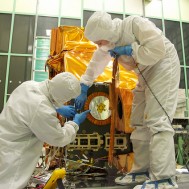When it comes to FDA medical-grade parts, quality is a key factor in the success (and failure) of medical devices — which is why medical device manufacturers demand thorough testing and precision for all of their medical-grade products in a certified cleanroom.
How exactly does a medical device manufacturer find a facility that meets these rigorous standards? Let’s review a few ways you can make sure you’re getting the most out of your chosen cleanroom.
What makes a cleanroom a clean room?
Used specifically for manufacturing medical and electronic components, the cleanroom is responsible for the thorough testing, complete accuracy and strict contamination control of all products created within this pristine environment. Cleanrooms are designed to limit product exposure to environmental pollutants like dust and airborne microbes, and these facilities are classified according to the number and size of particles permitted per volume of air.
In a cleanroom, you can generally find production, washing and packaging areas, molding machines, post-cure ovens, water treatment systems and air handling systems.
Does the cleanroom reduce all levels of contamination?
Contamination can lead to expensive downtime and increased production costs. Medical device original equipment manufacturers (OEMs) need cleanrooms that have an established platform of technology and contamination protocols that extend through component preparation, product assembly, packaging and testing of sterile medical devices and surgical products.
Many contaminants are generated from five basic sources: the facility, people, tools, fluids and product. With proper cleanroom architecture, filtration and cleaning stations, manufacturers should be able to provide an effective contamination control program.
Does the cleanroom receive regular inspections?
What types of inspection does the cleanroom have, and does it welcome audits? These are both necessary and beneficial, since they offer opportunities to consider objective views of a company’s policies and procedures.
Inspections ensure that cleanrooms and their equipment installations are safe, correctly built, operational and meet the required standards. Know the required rating for your individual business so you have a solid starting point to select your cleanroom provider.
Does the cleanroom meet classifications?
There are many determining factors involved in choosing a cleanroom classification, and every industry has a default standard. In medical device packaging, the default classification is ISO 7 (or a class 10,000) cleanroom. This means that there are a maximum of 10,000 particles larger than 0.5 microns per cubic foot in the cleanroom itself. Consider the following when determining what classification you need:
- What are the sources of contamination?
- What size particles do I need to filter out?
- How much air do I have to circulate to get that contamination out?
To ensure optimal performance, manufacturers should also continue to make improvements — like frequent design evaluation for each cleanroom and regular review of the air pressure within the facility.
Do you trust the company?
This isn’t just a simple process or transaction — this is a company you’re trusting to deliver the products (and quality) you need. Get to know the company’s background, reputation and products to decide if they’re the right fit for you.
Have cleanroom questions?
Maintaining cleanroom environments can be a complicated and critical task, but choosing the right manufacturer can be the difference between high and low-quality products.
How does your cleanroom operate? Are you looking for a manufacturing organization with in-house cleanroom capabilities? Visit our website or contact our engineers for more information.
